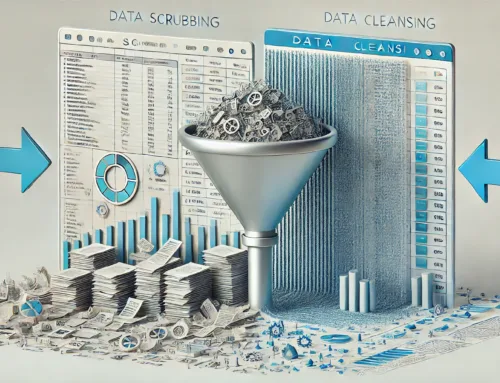As you navigate the realm of data scrubbing tools, the landscape can be overwhelming with the myriad of options available. However, understanding the key features and functionalities offered by the top contenders in this space can significantly impact your data cleaning processes. Each tool brings a unique set of strengths in terms of efficiency, ease of use, scalability, data profiling, matching accuracy, data merging, and data enrichment. By carefully evaluating these aspects, you can uncover the ideal tool that aligns with your organization’s data quality objectives and sets the stage for enhanced decision-making.
Efficiency of Tools
When it comes to evaluating the efficiency of data scrubbing tools, one must consider various factors that contribute to their performance. Performance metrics play a crucial role in determining how effectively a tool can process and clean data. Look for tools that offer clear performance metrics such as processing speed, accuracy rates, and data quality improvement to gauge their effectiveness.
Automation capabilities are another key aspect to assess when evaluating data scrubbing tools. Tools with strong automation capabilities can streamline the data cleaning process, saving time and reducing the potential for human error. Look for features like automated data deduplication, intelligent matching algorithms, and batch processing capabilities to ensure efficient data scrubbing workflows.
Ease of Use
When considering data scrubbing tools, ease of use is paramount. A user-friendly interface, minimal learning curve, and intuitive operations can significantly impact your efficiency and productivity. Choosing tools that prioritize these aspects can streamline your data cleaning process and enhance the overall user experience.
User-Friendly Interface
With a focus on user experience, data scrubbing tools are designed to offer an intuitive and efficient interface for users. The visual design plays a crucial role in enhancing user interaction. Tools with a clean layout, logical flow, and visually appealing elements contribute to a more pleasant user experience. Performance metrics are also essential, as users expect fast response times and smooth operation.
User experience is further enriched by customization options. The ability to tailor the interface to specific preferences and workflows empowers users to work more efficiently. Customizable features such as dashboard layouts, color schemes, and tool placement allow users to personalize their experience and optimize productivity.
When evaluating data scrubbing tools, consider how the user-friendly interface aligns with your workflow and preferences. Look for tools that prioritize visual design, offer robust performance metrics, and provide ample customization options to enhance your overall user experience.
Minimal Learning Curve
To ensure a seamless transition into utilizing data scrubbing tools, prioritizing a minimal learning curve is paramount. When selecting a data scrubbing tool, look for ones that offer quick setup and deliver fast results. Tools that boast a streamlined process tend to provide accurate outcomes efficiently. A minimal learning curve means you can start using the tool swiftly, maximizing productivity from the get-go. Choose tools that are intuitive and straightforward, allowing users to grasp the functionalities without extensive training. By opting for solutions with minimal complexity, you can expedite the data scrubbing process and minimize the time spent on learning how to use the tool. Remember, the goal is to enhance efficiency and accuracy in data cleaning tasks, so prioritize tools that offer quick onboarding, straightforward navigation, and immediate access to the features needed to achieve accurate outcomes.
Intuitive Operations
For optimal efficiency in data scrubbing tasks, the aspect of intuitive operations, or ease of use, plays a crucial role in selecting the right tool. When evaluating data scrubbing tools, consider the automation benefits they offer in streamlining the process. Tools with intuitive operations simplify tasks, allowing for quicker data cleansing and manipulation. Look for software that provides customization options, enabling you to tailor the tool to your specific needs and preferences. Intuitive operations facilitate a smooth user experience, reducing the learning curve and increasing productivity. By choosing a data scrubbing tool with user-friendly features, you can save time and effort in managing your data quality. Ensure the tool’s interface is intuitive and easy to navigate, so that you can efficiently perform data cleaning tasks without unnecessary complexities. Prioritize tools that offer a balance between automation benefits and customization options for a seamless data scrubbing experience.
Scalability
When considering data scrubbing tools, assessing growth potential is crucial. You need a tool that can handle your expanding data needs efficiently and effectively. Ensure that the tool you choose has the capacity for expansion as your data volumes increase.
Growth Potential Assessment
Scalability, a critical factor in assessing the growth potential of data scrubbing tools, refers to the ability of a tool to handle increasing amounts of data efficiently and effectively. When conducting a growth potential assessment, market analysis plays a crucial role in understanding the demand for data scrubbing tools and the expected growth rate in the industry. By evaluating the scalability of different tools, you can determine their capacity to adapt to the growing needs of your organization as data volumes expand.
In comparing competitors, it is essential to look at how each tool scales with the increasing data workload and whether they offer flexible solutions to accommodate growth. Understanding the scalability of data scrubbing tools in the context of market trends and competitor capabilities enables you to make informed decisions that align with your organization’s long-term needs. Remember, a robust and scalable data scrubbing tool will not only meet your current requirements but also support future growth without compromising on performance.
Capacity for Expansion
How can you determine the capacity for expansion, particularly in terms of scalability, when evaluating data scrubbing tools for your organization’s needs? When assessing the scalability of data scrubbing tools, it is crucial to consider their ability to handle increasing volumes of data without compromising data quality or the efficiency of the data cleansing process. Scalability is essential for accommodating growth within your organization and ensuring that the data scrubbing tool can adapt to evolving needs.
The capacity for expansion of a data scrubbing tool is closely linked to its scalability. A scalable tool should be able to efficiently process large datasets while maintaining high standards of data quality throughout the cleansing process. This ensures that as your organization grows, the tool can effectively handle the increased data workload without sacrificing accuracy or performance.
Data Profiling Capabilities
Data profiling capabilities play a crucial role in enhancing the efficiency and accuracy of data scrubbing tools. By analyzing data quality and performing data validation, these capabilities enable the identification of inconsistencies, errors, and redundancies within datasets. Data profiling tools offer insights into the structure, content, and relationships among data elements, allowing for a comprehensive understanding of the data landscape.
Effective data profiling ensures that data scrubbing tools can accurately identify and address issues such as missing values, incorrect formatting, and duplicate records. By understanding the characteristics and patterns present in the data, organizations can make informed decisions regarding data cleaning strategies and prioritize areas that require attention. Additionally, data profiling helps in detecting anomalies that might impact the overall integrity of the data, ultimately leading to improved data quality and reliability.
Data Matching Accuracy
Enhancing the accuracy of data matching is essential for optimizing the performance of data scrubbing tools. Data quality plays a crucial role in ensuring that the matching process is effective. By accurately identifying and eliminating data duplication, the overall quality of the database is improved. System integration is key to enhancing data matching accuracy as it allows for seamless connectivity between different data sources, enabling more robust record linkage.
To achieve high data matching accuracy, it is important to implement advanced algorithms that can efficiently compare and match large datasets. These algorithms should be able to handle variations in data formats and account for potential errors or inconsistencies within the data. By fine-tuning the matching criteria and adjusting parameters based on the specific requirements of the data set, you can enhance the precision of the matching process.
Data Merging Functionality
To optimize the performance of data scrubbing tools, one crucial aspect to consider is the functionality of data merging. When evaluating data scrubbing tools, the ability to effectively merge various datasets is essential for maintaining data accuracy and consistency. Here are key points to consider regarding data merging functionality:
- Seamless Integration: Look for tools that offer seamless integration with different data sources to streamline the merging process.
- Data Cleansing Methods: Ensure the tool provides robust data cleansing methods to eliminate duplicates and inconsistencies during the merging process.
- Data Quality Assessment: Opt for tools that include data quality assessment features to evaluate the merged data for accuracy and completeness.
- Automated Matching: Choose tools that offer automated matching capabilities to efficiently merge large datasets without manual intervention.
Data Enrichment Features
When aiming to enhance the value and usability of your data scrubbing tools, one crucial aspect to explore is their Data Enrichment Features. Data enrichment plays a vital role in improving data quality and accuracy by supplementing existing data with additional information from various sources. These features can help fill in missing data fields, standardize formats, and even provide insights through data profiling and analysis. By leveraging data enrichment capabilities within your scrubbing tool, you can ensure that your database is more complete, up-to-date, and relevant for decision-making processes.
Data enrichment features enable you to enrich your datasets with valuable information, enhancing the overall quality and accuracy of your data. These tools can help you identify and rectify inconsistencies, errors, and duplications within your database, ultimately leading to more reliable and trustworthy data. By incorporating data enrichment functionalities into your data scrubbing tools, you can ensure that your data is not only clean but also enriched with relevant insights for improved decision-making.
Frequently Asked Questions
Can These Data Scrubbing Tools Handle Unstructured Data Formats?
Yes, these data scrubbing tools can handle unstructured data formats efficiently. They employ natural language processing and image recognition to extract and clean data effectively. You’ll find them adept at managing diverse data types seamlessly.
Are There Any Limitations on the Size of Datasets These Tools Can Process?
When evaluating data scrubbing tools, consider if they meet your needs. Check if they provide performance benchmarks for various dataset sizes. Ensure they can handle large datasets efficiently to overcome scalability challenges effectively.
Do These Tools Support Real-Time Data Scrubbing and Updating?
Yes, these tools provide real-time processing capabilities for swift data scrubbing and updating. They also offer robust data integrity checks to ensure accuracy. Consider these features when evaluating data scrubbing tools for your needs.
How Do These Tools Handle Data Privacy and Security Concerns?
When it comes to handling data privacy and security concerns, these tools excel in safeguarding your data through robust measures like data encryption, compliance adherence, user access controls, and detailed audit logs to ensure accountability and protection.
Can These Tools Integrate With Popular Data Storage Platforms Seamlessly?
Yes, these tools excel in data integration capabilities, seamlessly connecting with popular storage platforms. They prioritize ease of use, ensuring a smooth process for integrating and managing data across various systems efficiently.




